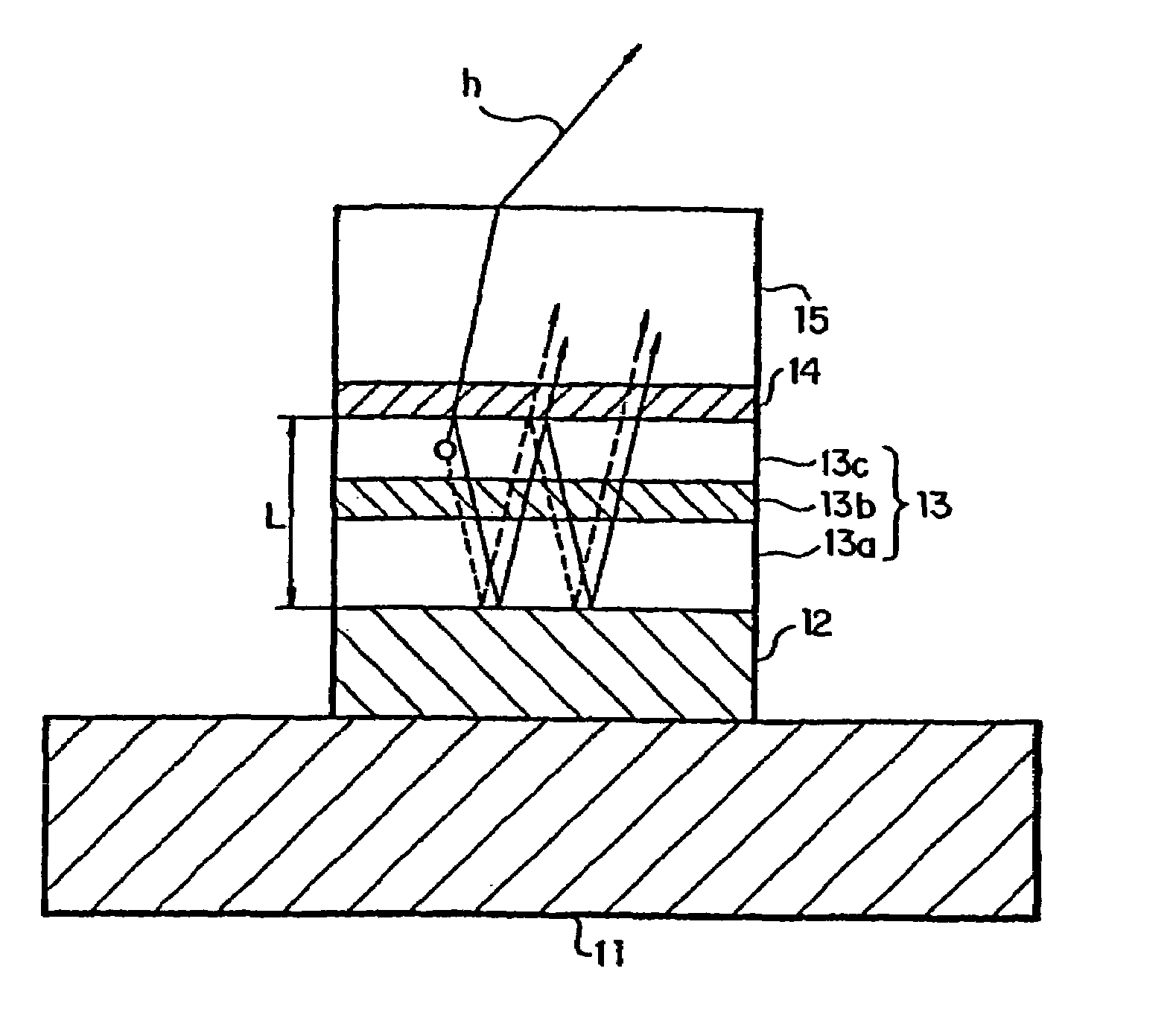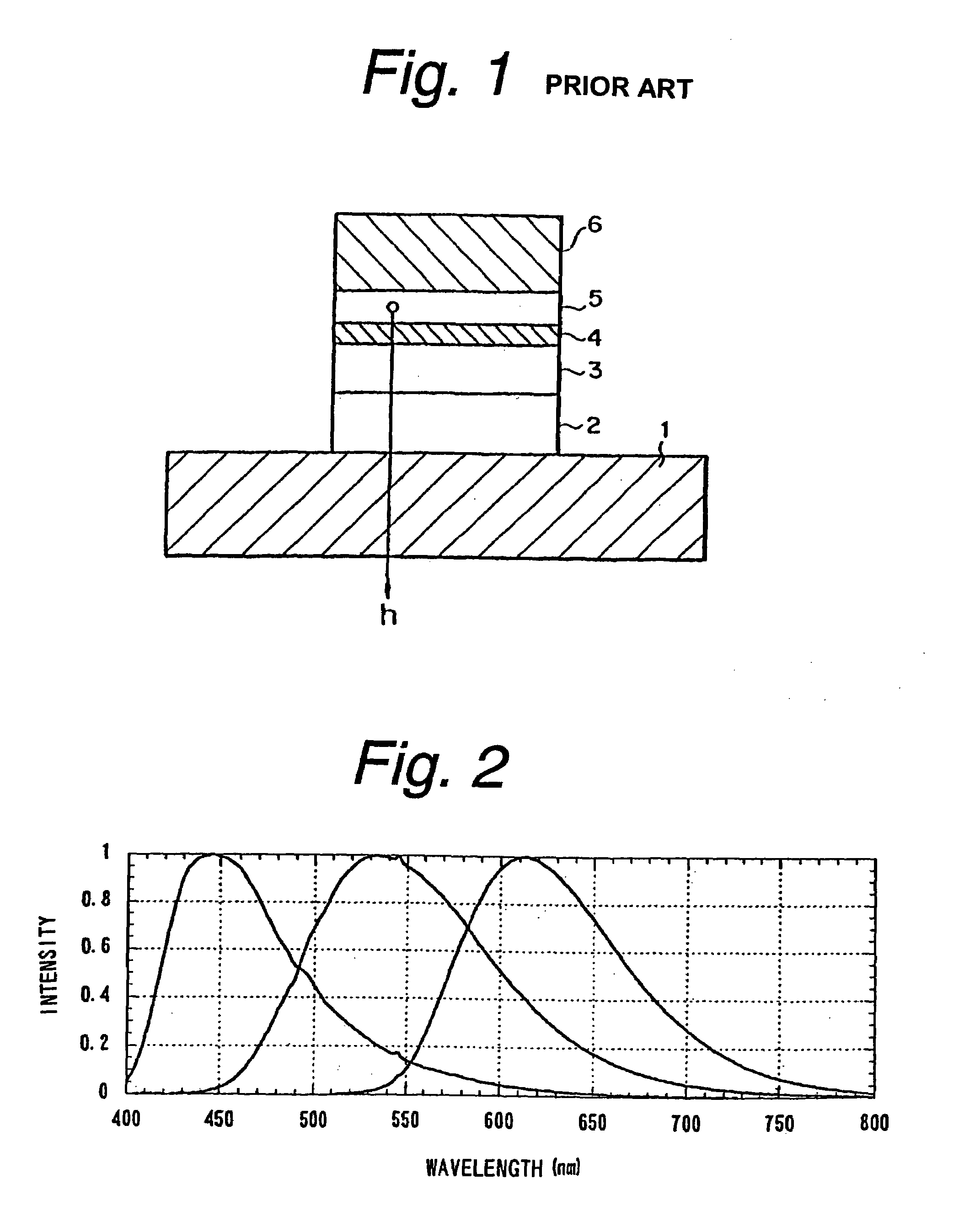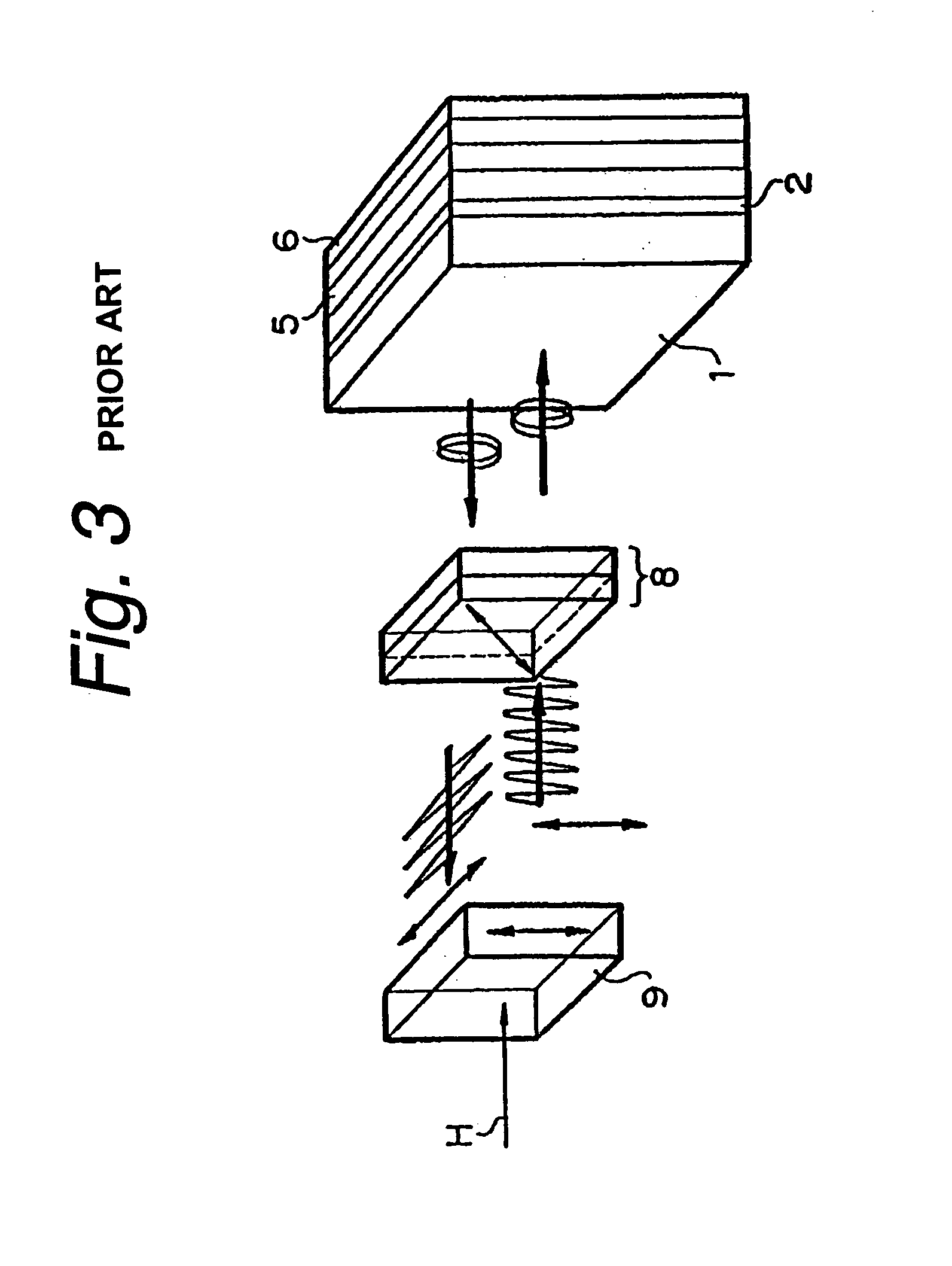Display device with a cavity structure for resonating light
a display device and cavity structure technology, applied in the field of display devices, can solve the problems of not maintaining a sufficient color reproduction range over wide view angles, device does not envisage, and cannot obtain a sufficient color reproduction range to display, so as to reduce external light reflection, improve contrast, and reduce luminance
- Summary
- Abstract
- Description
- Claims
- Application Information
AI Technical Summary
Benefits of technology
Problems solved by technology
Method used
Image
Examples
fourth embodiment
[0089]FIG. 19 is a cross-sectional view that shows a central part of an organic EL device according to the fourth embodiment of the invention. The organic EL device shown in FIG. 19 includes a color filter in addition to the top surface emission type organic EL device according to the first embodiment shown in FIG. 4. More specifically, the first electrode 12 as the reflection layer, organic layer 13 and semitransparent reflection layer 14 make up the cavity structure, with the organic layer 13 as the cavity portion, and a color filter 20 is disposed on the semitransparent reflection layer 14 via the second electrode (transparent electrode) 15 and the passivation film 16.
[0090]Let the color filter 20 be configured to transmit only light h near the peak wavelength λ of a spectrum to be extracted from the organic EL device. That is, a device for emitting light in the red (R) region has a color filter 20R that transmits light exclusively in the red (R) region, a device for emitting lig...
PUM
 Login to View More
Login to View More Abstract
Description
Claims
Application Information
 Login to View More
Login to View More - R&D
- Intellectual Property
- Life Sciences
- Materials
- Tech Scout
- Unparalleled Data Quality
- Higher Quality Content
- 60% Fewer Hallucinations
Browse by: Latest US Patents, China's latest patents, Technical Efficacy Thesaurus, Application Domain, Technology Topic, Popular Technical Reports.
© 2025 PatSnap. All rights reserved.Legal|Privacy policy|Modern Slavery Act Transparency Statement|Sitemap|About US| Contact US: help@patsnap.com



